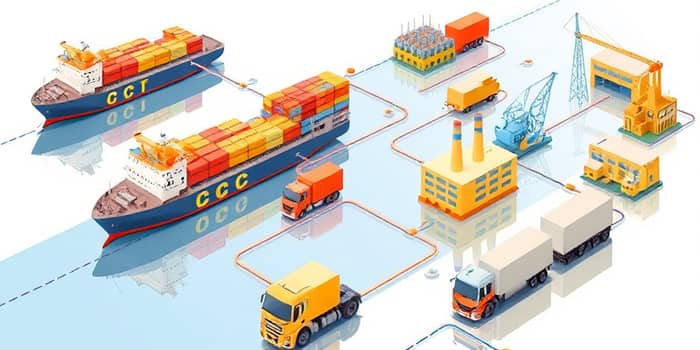
As global markets recover from unprecedented disruptions during the pandemic, businesses are witnessing a significant shift in their operational landscapes. Improved data accuracy and consistency across systems is helping organizations regain control over their supply networks. This resurgence in stability offers a pathway to optimize procurement strategies, evaluate supplier performance, and implement forward-looking logistics plans. For decision makers, the return to predictable operations in supply networks is not merely a sigh of relief; it represents a strategic opportunity to reduce expenses and build resilient, future-ready supply chains.
Supply chain normalization marks the transition from erratic, disruption-prone processes to streamlined and stable workflows. After years of pandemic-related bottlenecks, companies are now realigning production schedules, smoothing demand fluctuations, and rebuilding inventory reserves. This process involves standardized communication protocols, strengthened partnerships, and consistent application of best practices across all tiers of the supply chain. As a result, firms can achieve standardized processes across the supply chain, minimizing errors, improving service levels, and unlocking cost benefits.
Normalization also hinges on accurate, real-time visibility into material flows. By harnessing unified data platforms, stakeholders can quickly identify potential disruptions, reallocate resources, and coordinate contingency plans. In this environment, processes that once took weeks—such as order matching, contract reviews, and shipment tracking—can be executed in days or even hours, significantly enhancing overall responsiveness and pacing the path toward sustained cost reductions.
One of the most tangible outcomes of supply chain normalization is the dramatic decline in input costs. As logistical bottlenecks ease, shipping rates stabilize and lead times shorten. Suppliers compete more aggressively for contracts, driving down prices for raw materials and intermediate goods. Companies benefit from reduced procurement and transportation bottlenecks, allowing them to negotiate better terms and secure volume discounts.
Empirical data underscores these improvements. Research indicates that organizations with smoothly functioning supply chains enjoy up to 79% higher earnings, while those still grappling with inefficiencies may see nearly 45% of their profits eroded annually. By capitalizing on more accurate inventory forecasting capabilities, businesses can minimize safety stock levels, reduce holding costs, and reallocate capital toward strategic investments rather than idle inventory.
The journey toward normalized supply chains and reduced input costs is fueled by several critical factors:
When input costs fall, the ripple effects extend beyond individual enterprises. Lower raw material expenses can ease inflationary pressures on finished goods, contributing to more stable consumer prices. Macrostrategists highlight that as supply chain pressures alleviate, central banks may adopt more flexible monetary stances, fostering an environment conducive to growth.
Furthermore, normalized supply chains free up resources previously allocated to crisis management. Businesses can redirect budgets toward research and development, digital transformation initiatives, and workforce development programs. This reallocation not only drives innovation but also creates positive feedback loops for continuous adjustment, ensuring that organizations remain agile in the face of emerging challenges and opportunities.
Despite the clear benefits of normalization, ongoing risks persist. Geopolitical tensions, regulatory shifts, and climate-related disruptions can threaten hard-won efficiencies. Maintaining normalized operations requires vigilant monitoring, flexible supply base diversification, and robust scenario planning.
Looking ahead, companies that embrace a culture of normalization—in which data is harmonized, processes are standardized, and partnerships are collaborative—will be best positioned to weather future disruptions. Those organizations will enjoy not only reduced input costs but also enhanced market responsiveness, improved profitability, and a clear competitive edge.
Supply chain normalization is more than a post-crisis recovery phase; it is a strategic imperative that drives down input costs while establishing the foundation for sustained growth. By leveraging advanced technologies, fostering strong supplier collaborations, and standardizing data practices, businesses can transform unpredictability into opportunity. As the global economy evolves, the companies that master normalization will lead the way in cost efficiency, innovation, and resilience.
References













